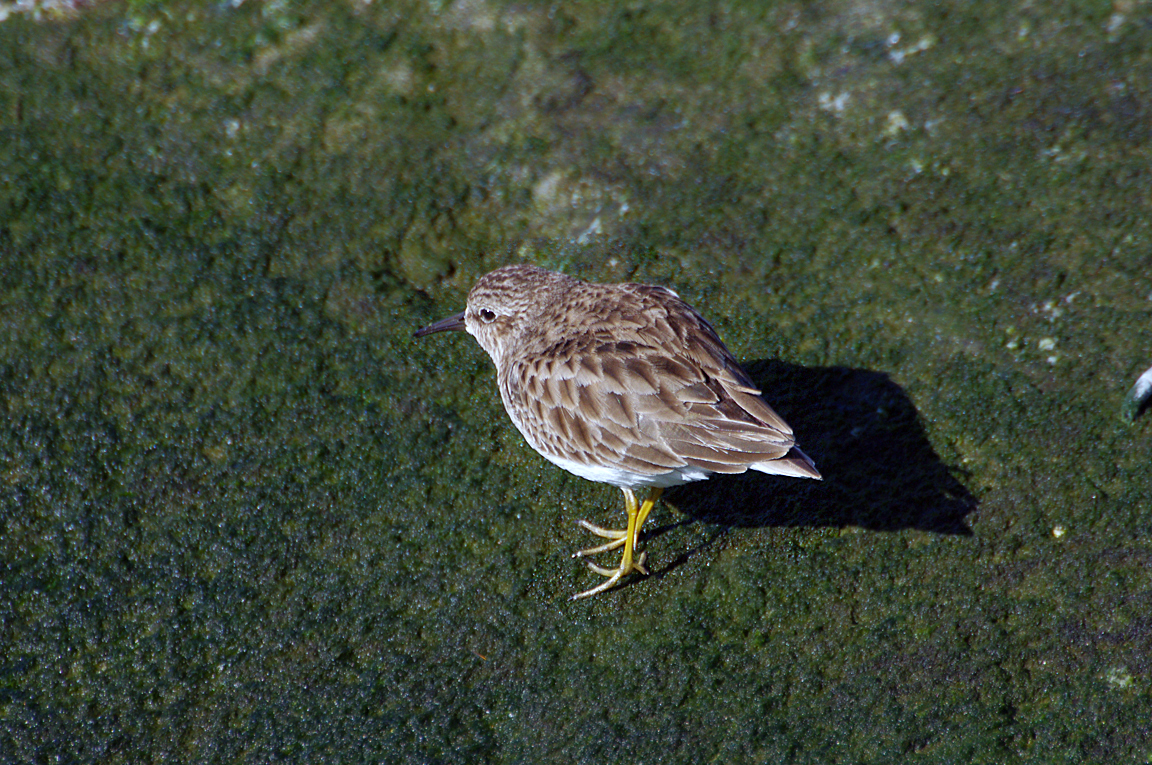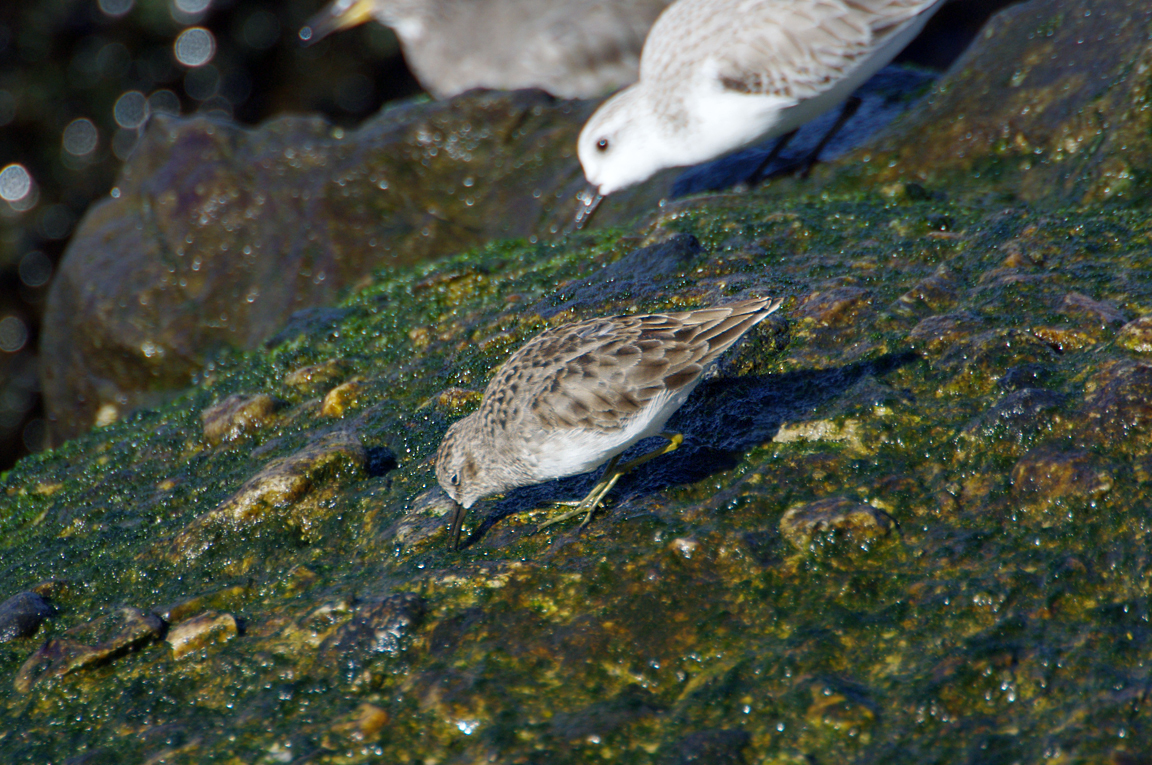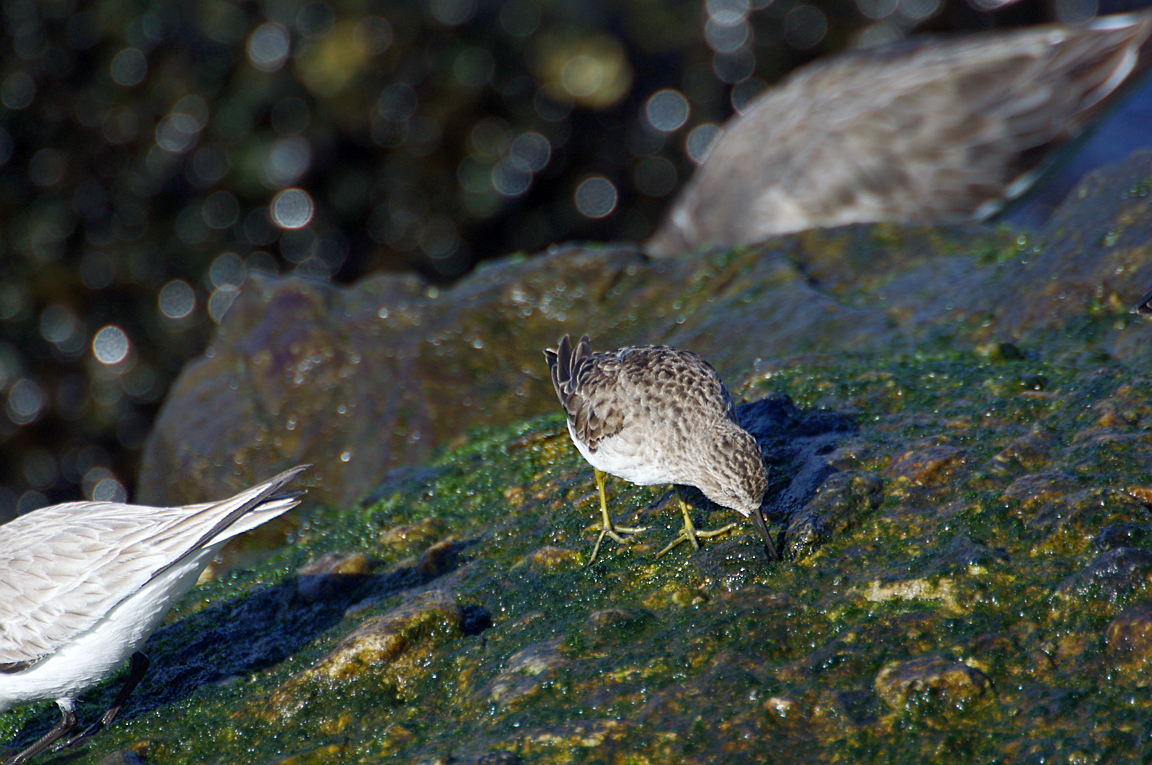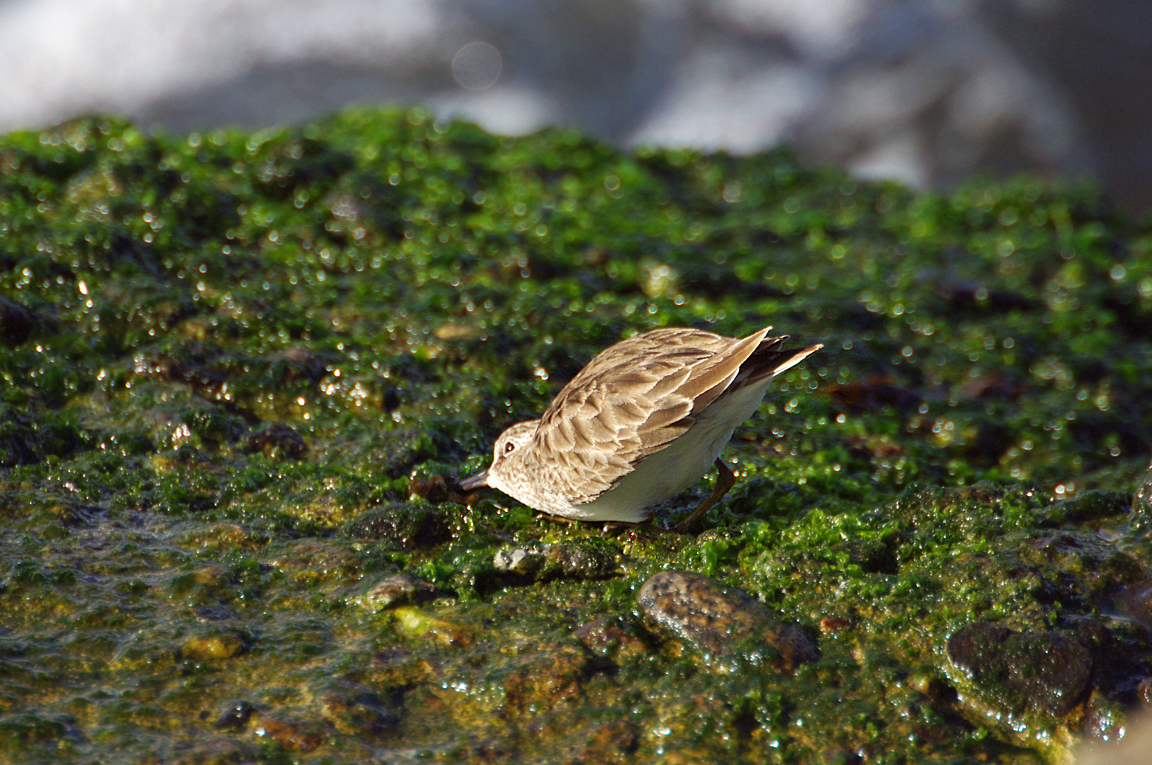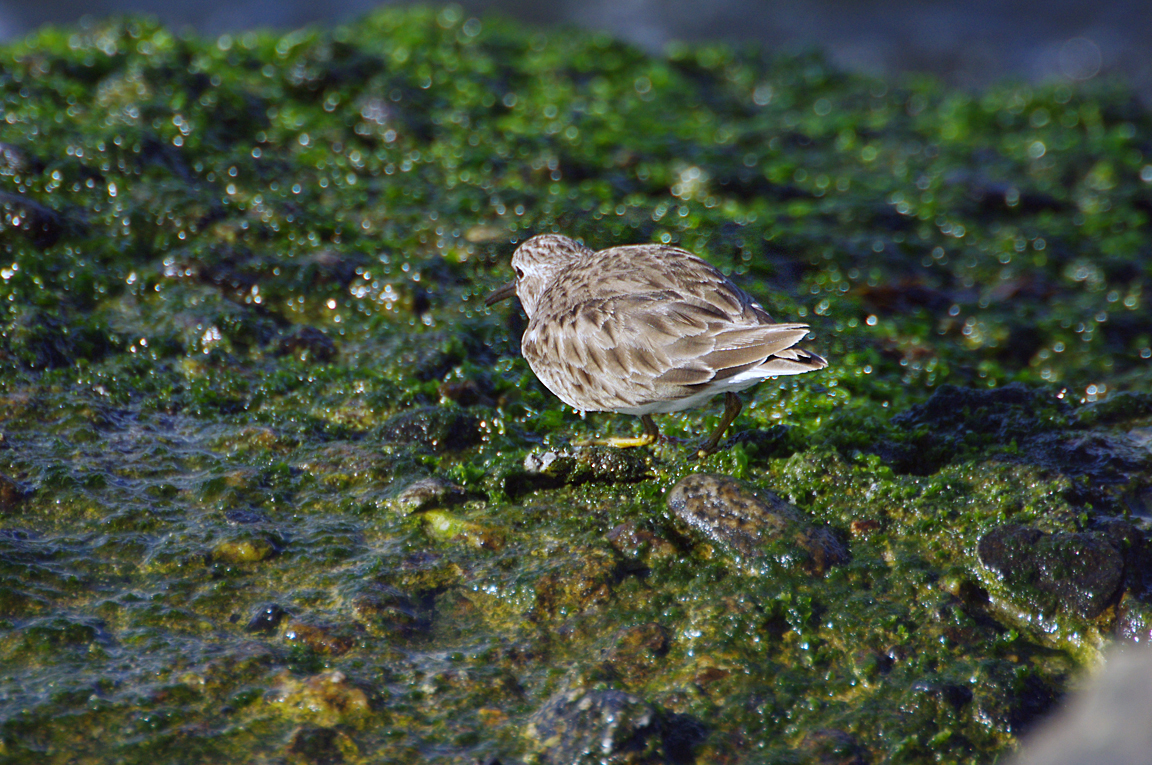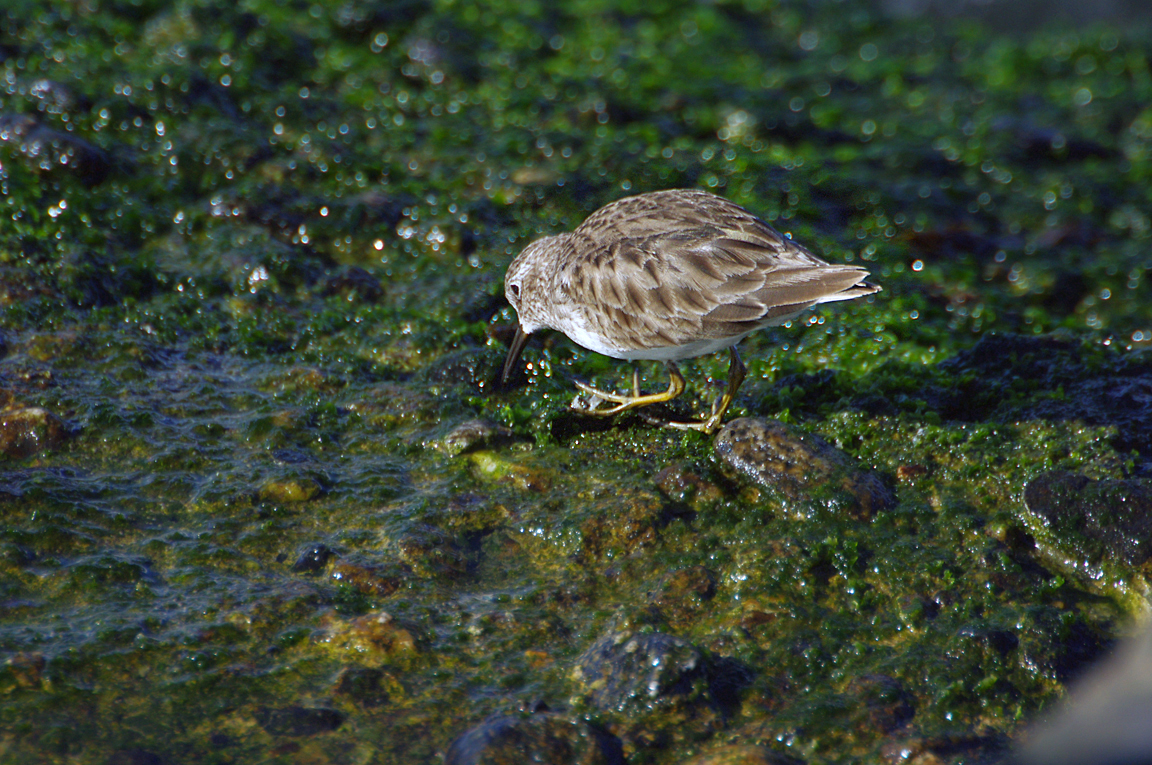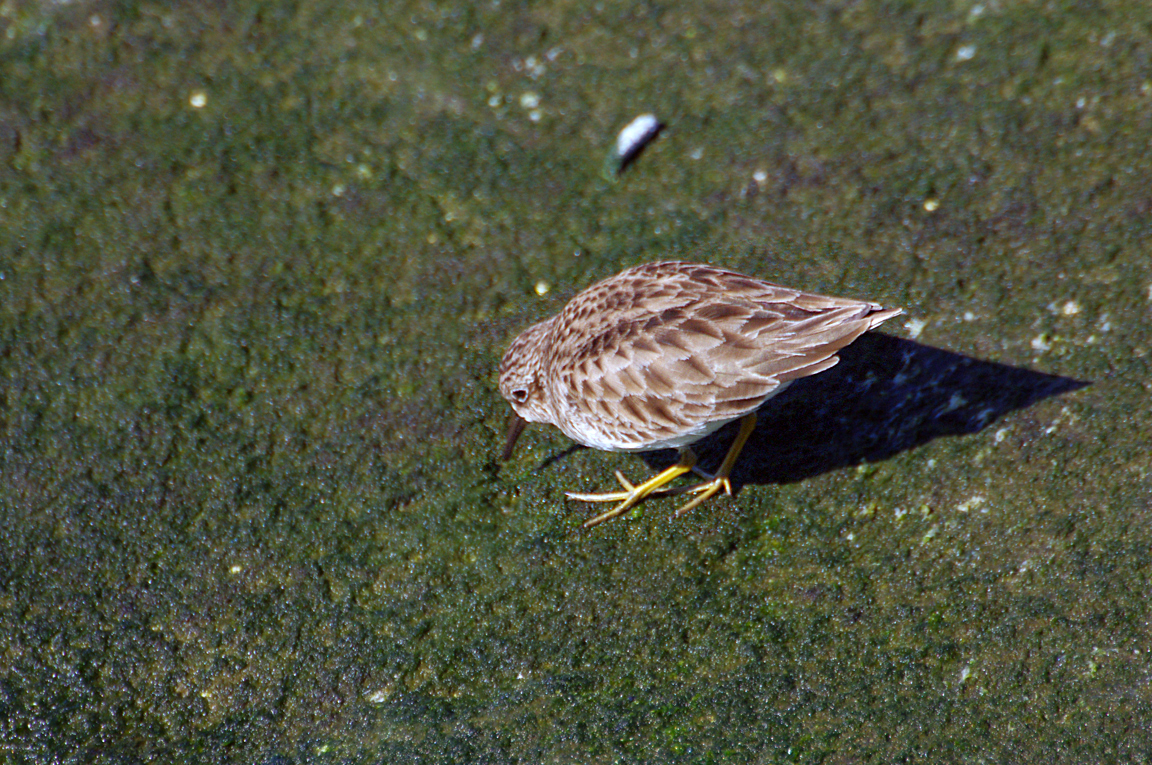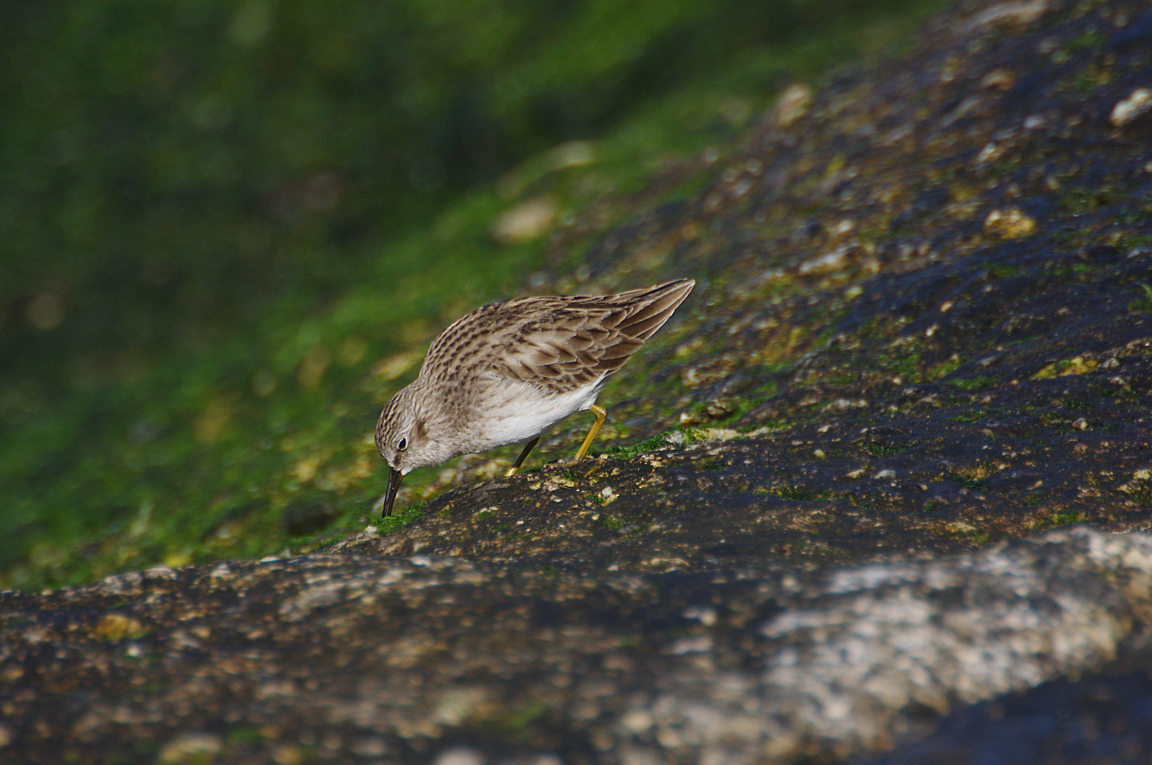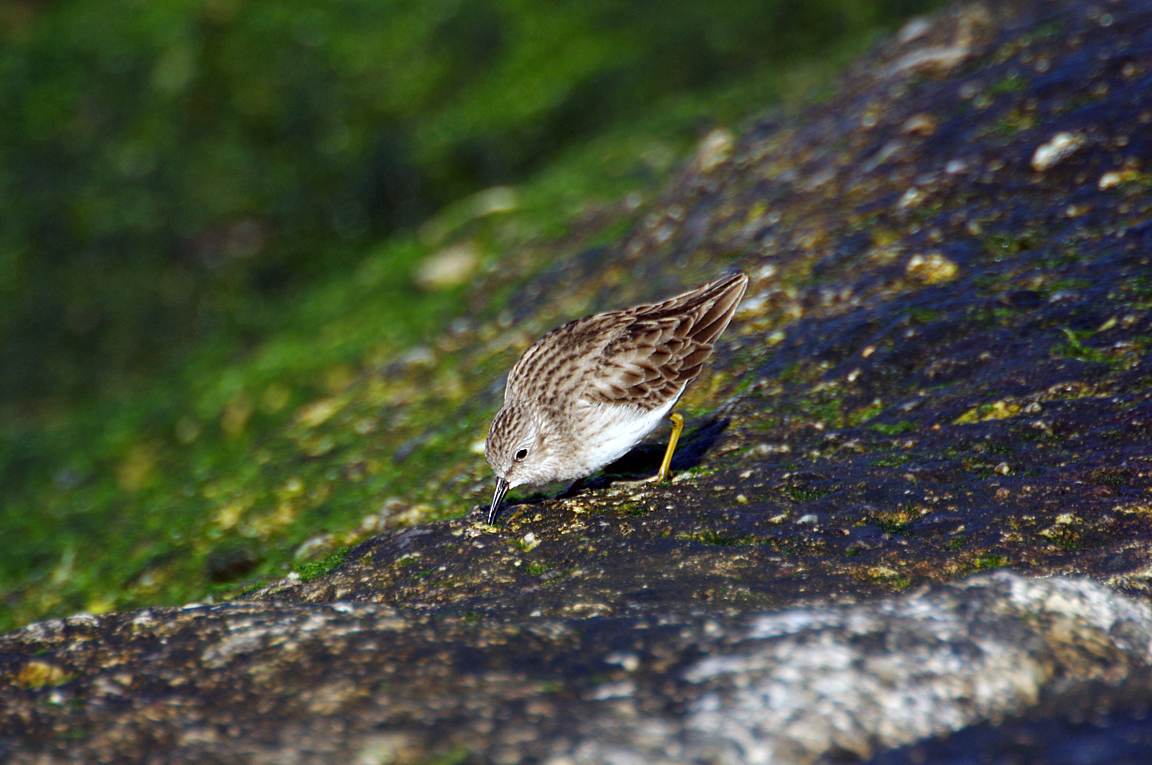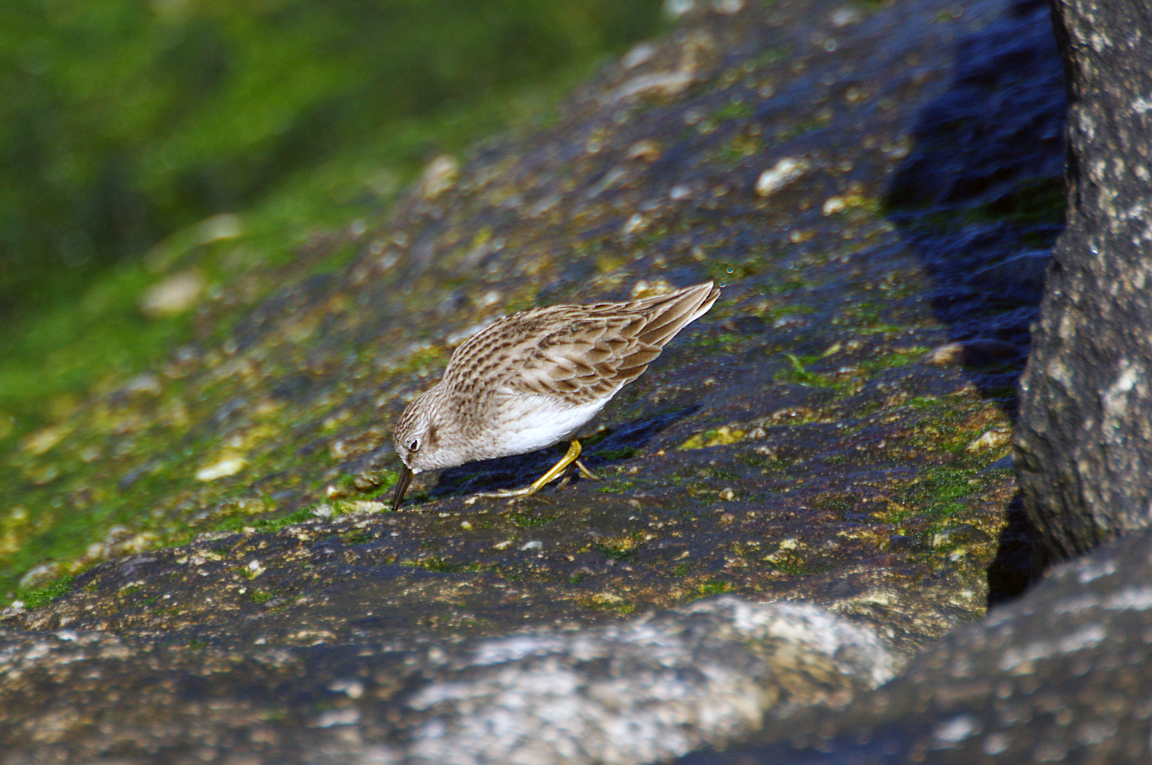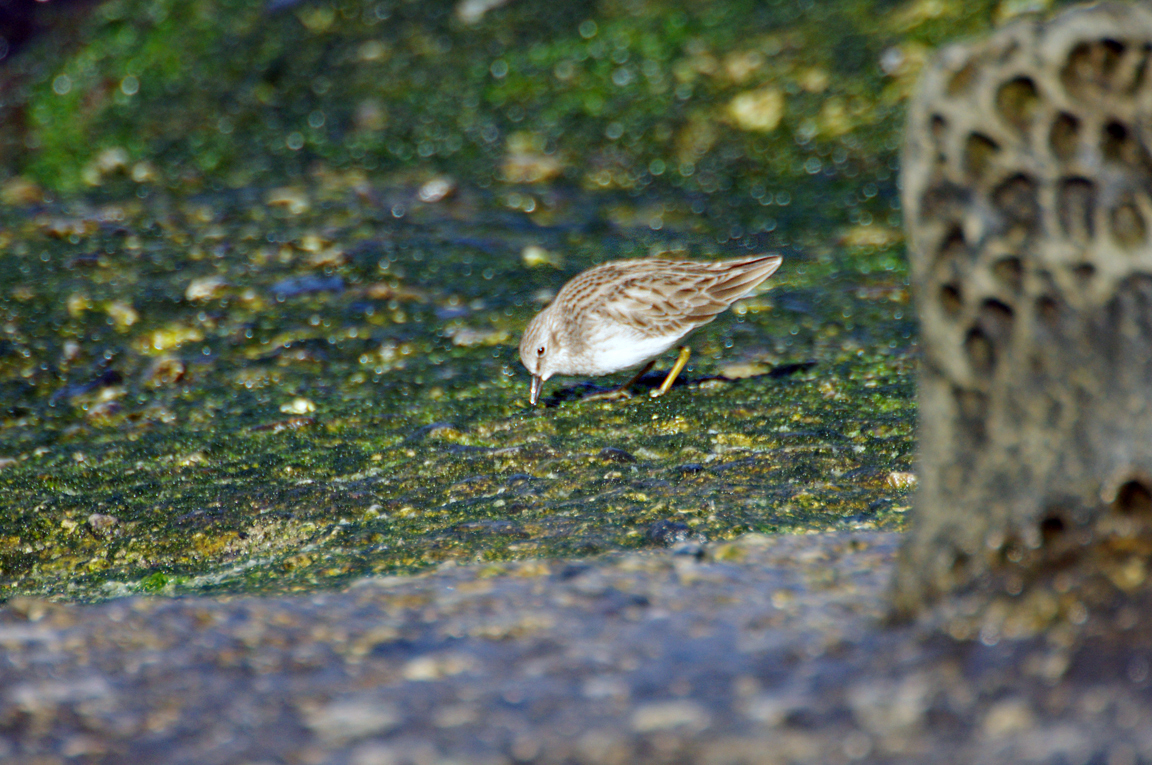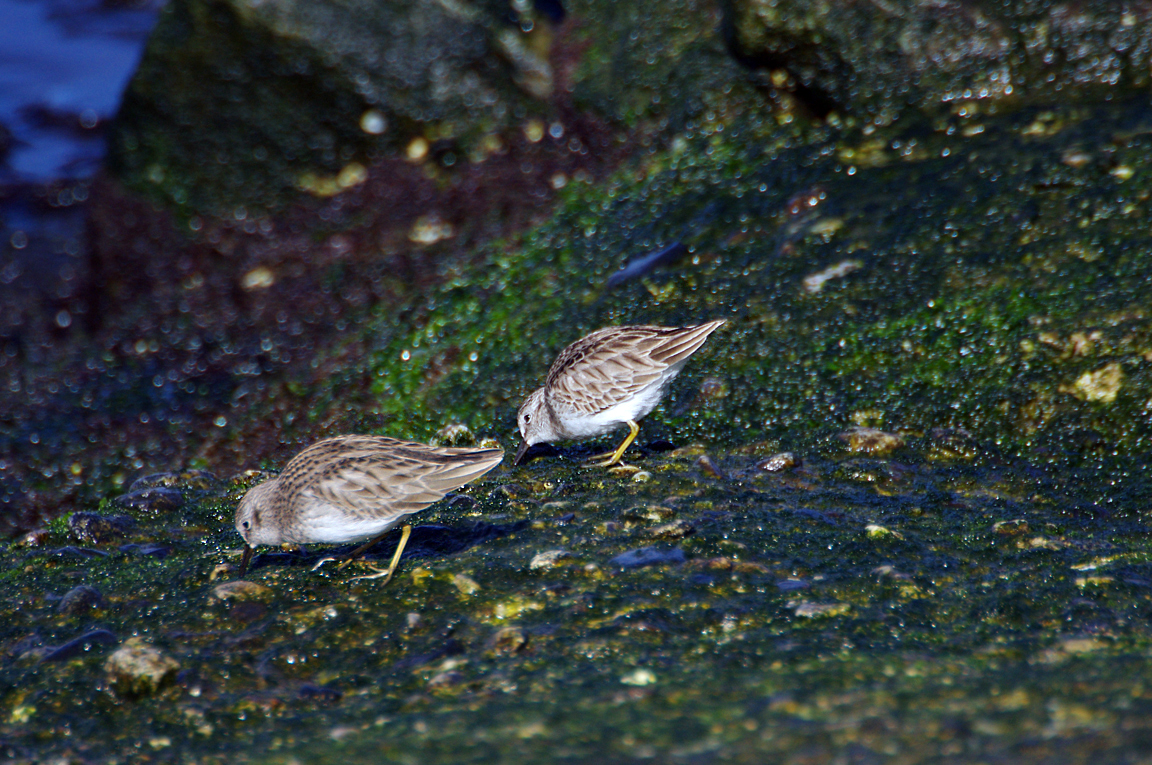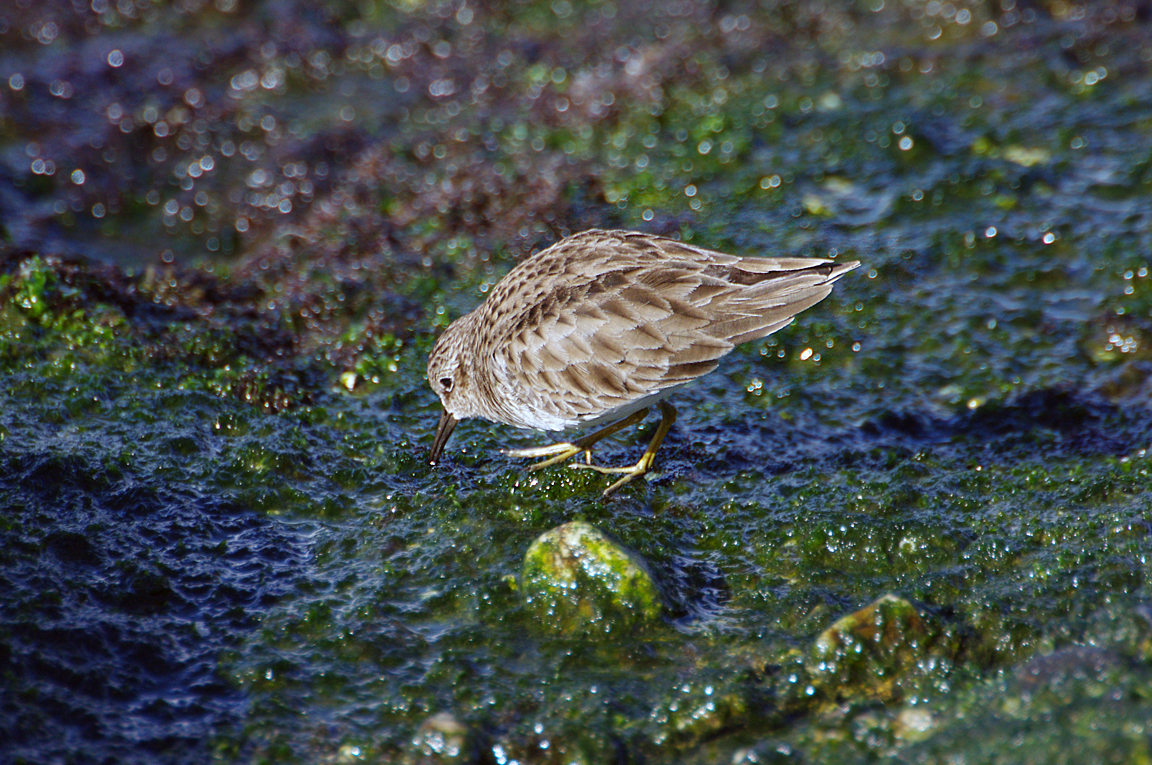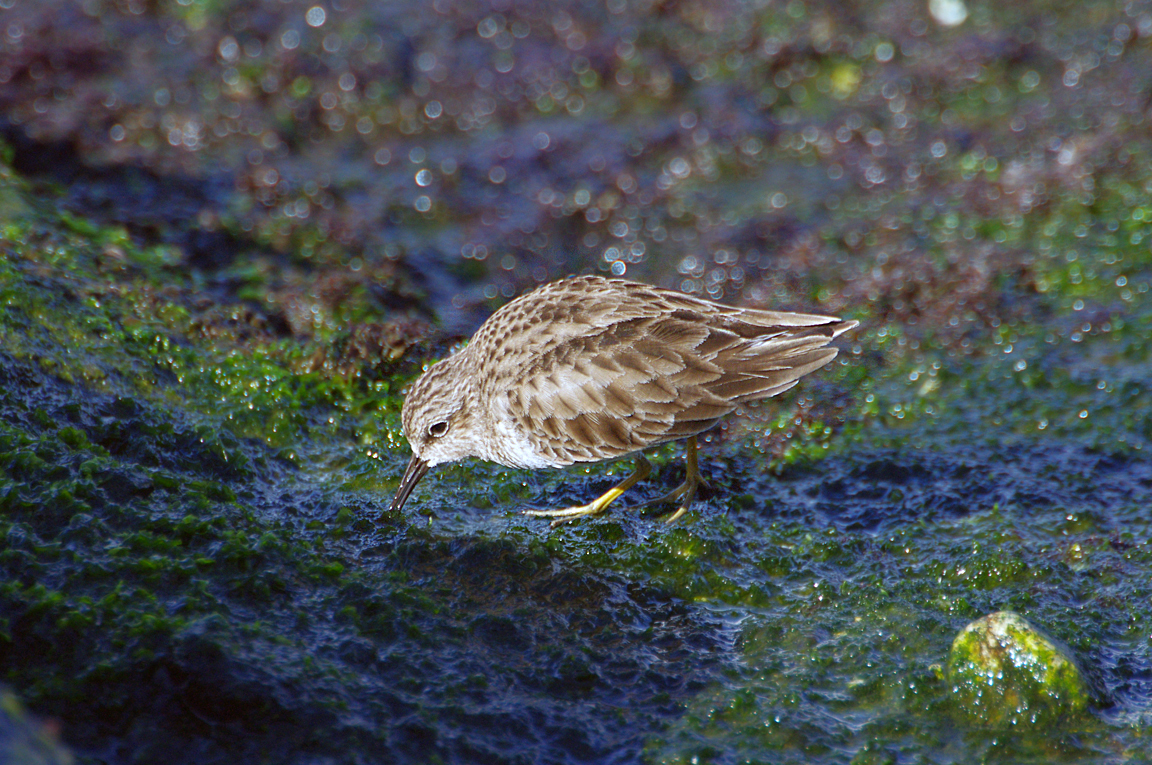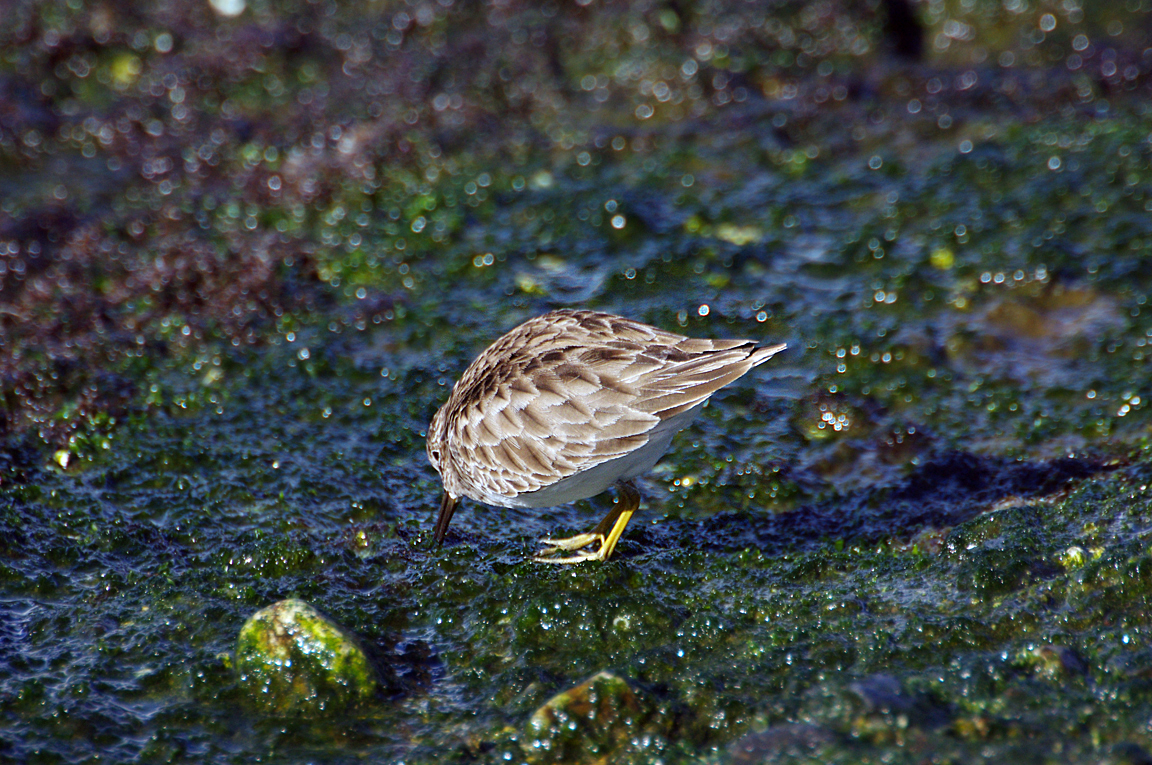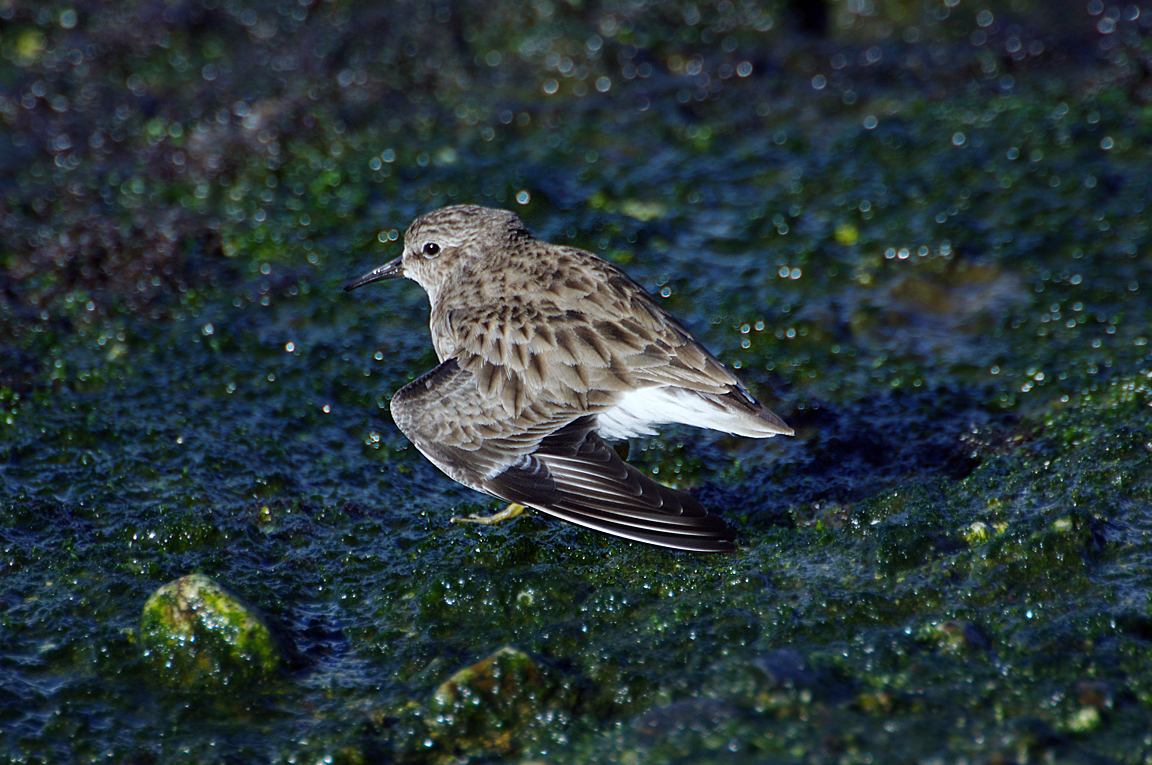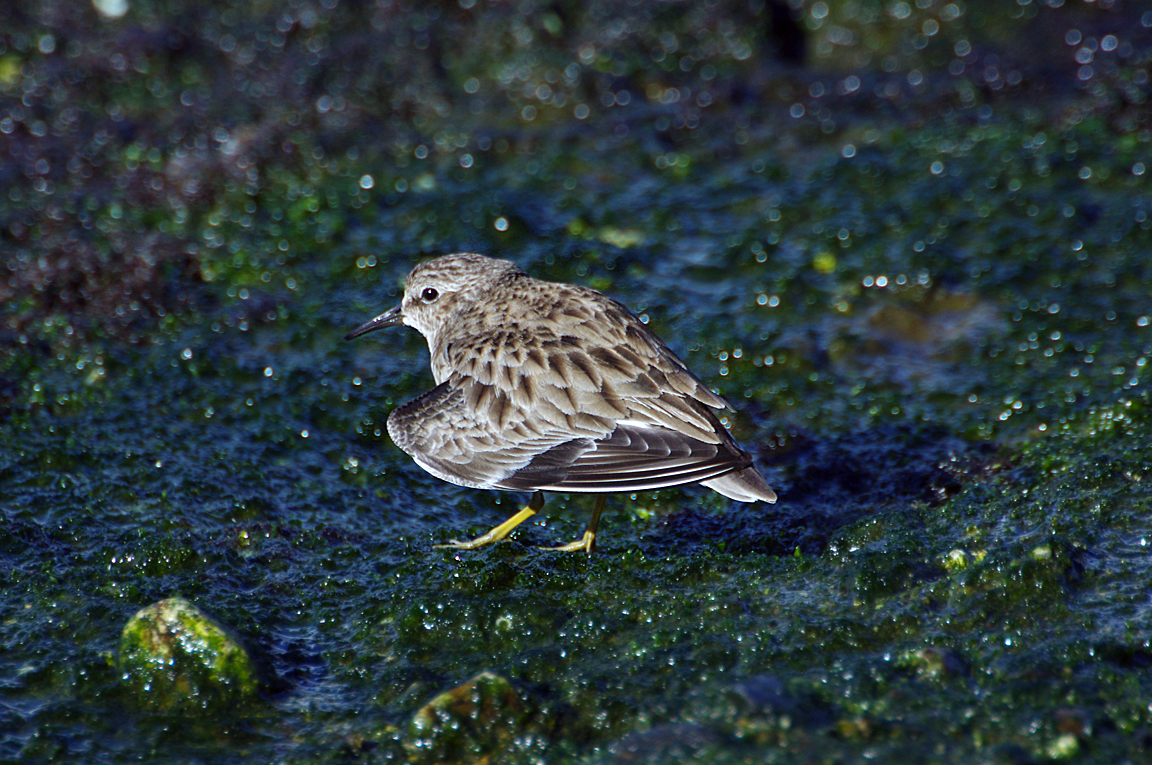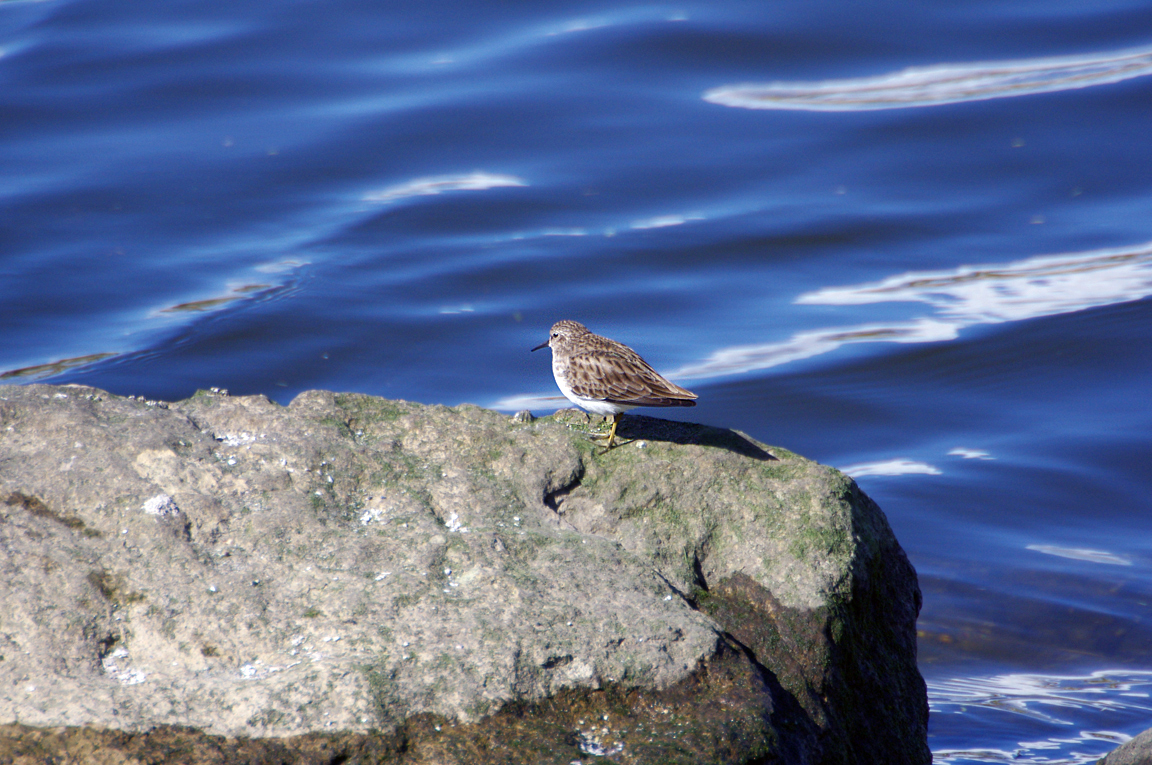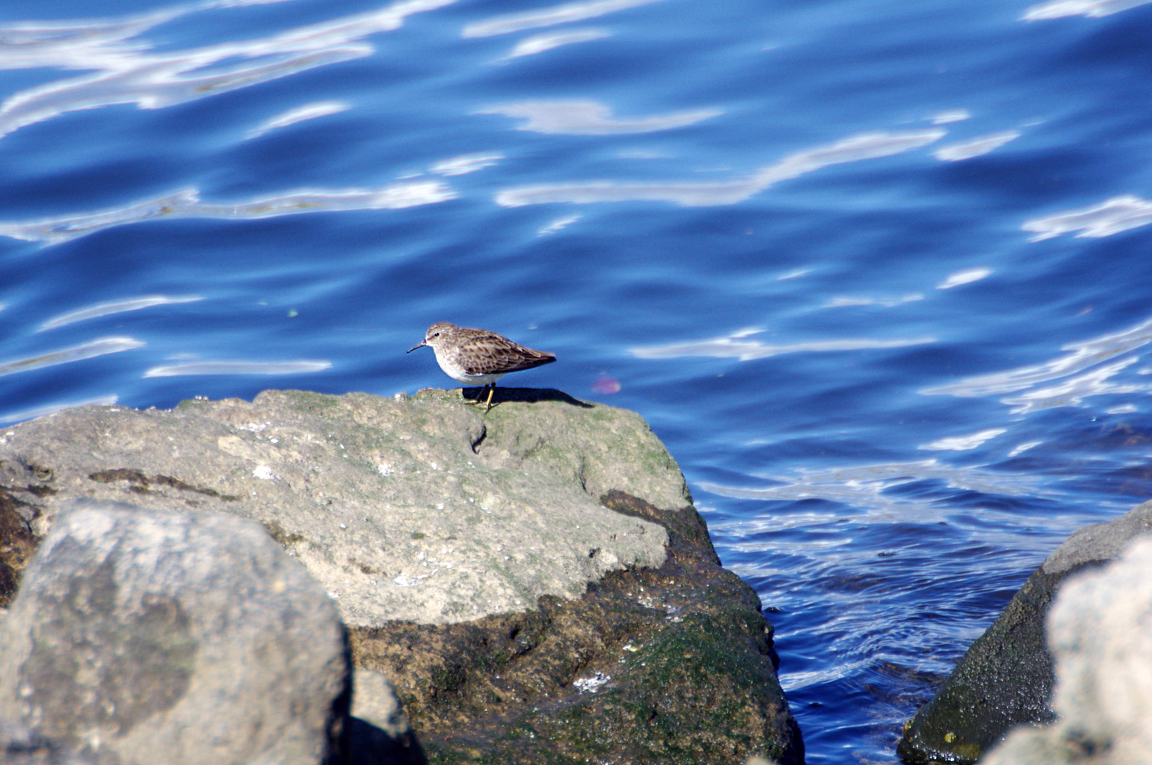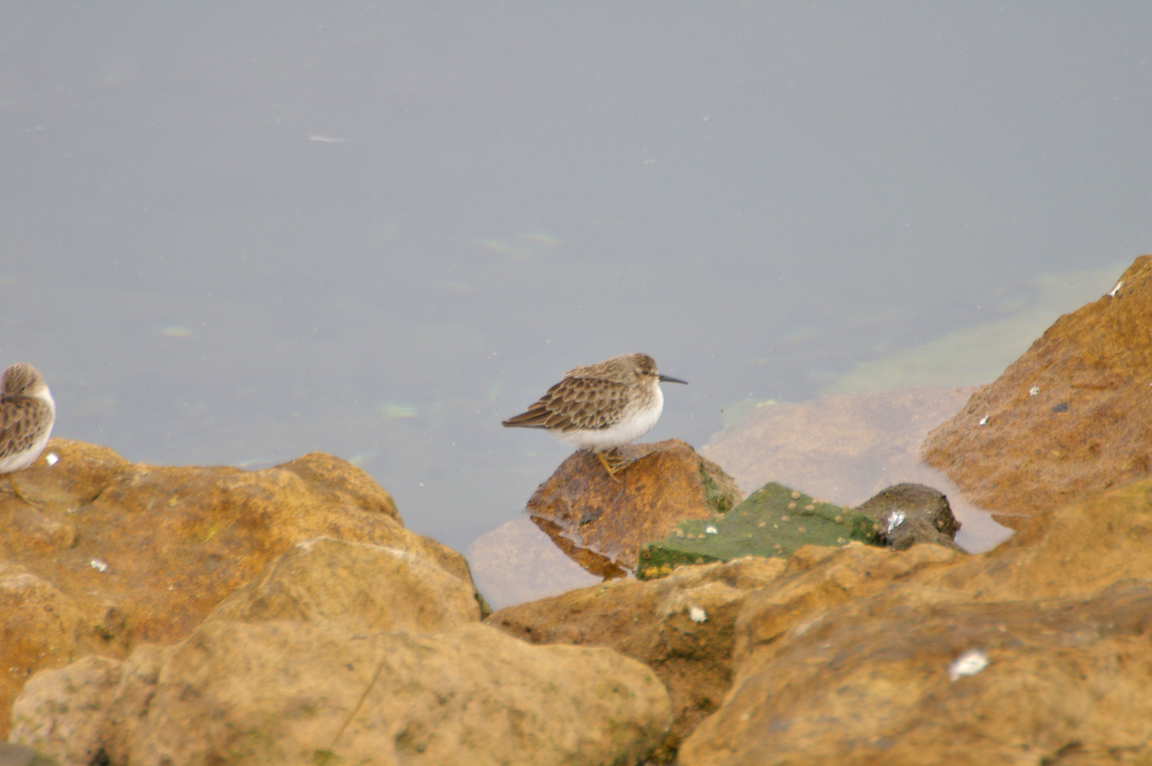|
|
|
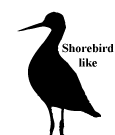 |
Least Sandpiper
|
| Calidris minutilla | |
A common small shorebird, the Least Sandpiper can be found in migration all across North America. It can be readily identified by its small size and yellow legs.
Interesting Information
-
The Least Sandpiper is the smallest shorebird in the world.
-
Although it is a relatively numerous shorebird, the Least Sandpiper tends to occur in flocks of dozens or hundreds, rather than thousands like some other sandpipers. It also tends to forage at the upper edge of mudflats or along drier margins of inland ponds than other related small sandpipers.
Description
Adult Description
-
Size: 13-15 cm (5-6 in)
-
Wingspan: 27-28 cm (11-11 in)
-
Weight: 19-30 g (0.67-1.06 ounces)
Small sandpiper. Short neck. Moderately long bill, may droop slightly at tip. Moderately long legs. Black center of rump and tail. Legs yellowish. Back reddish with black spots. Two thin white lines down back. Chest usually only well marked with rather distinct chest band.
Sex Differences
Sexes Similar
Immature
Juvenile similar to adult, but with more scaly pattern on back.
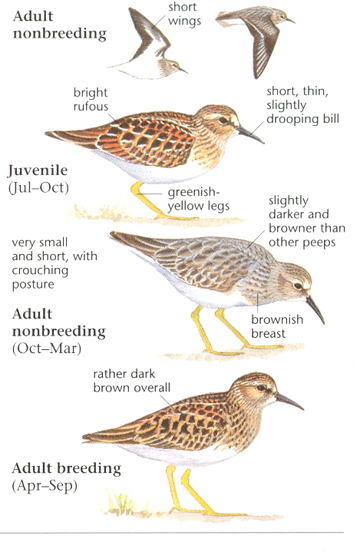
Photo taken from: The Sibley Field Guide by David Allen Sibley
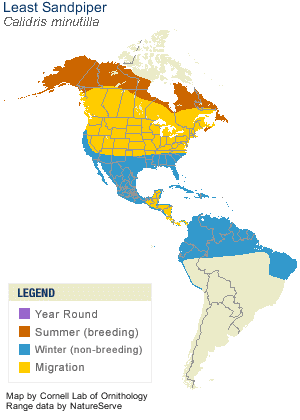
© 2003 Cornell Lab of Ornithology
|
Habitat |
|
Breeds in mossy or wet grassy tundra, occasionally in drier areas with scattered scrubby bushes. Migrates and winters in wet meadows, mudflats, flooded fields, shores of pools and lakes, and, less frequently, sandy beaches. |
|
Behavior |
|
Usually feeds in a communal area distant from nesting grounds; forages by gleaning and probing on mudflats and beaches. |
|
Food |
|
Feeds on insects, seeds, and aquatic invertebrates; also eats crustaceans, marine worms, and mollusks on the coast. |
Taxonomy
| Kingdom: | Animalia |
| Phylum: | Chordata |
| Subphylum: | Vertebrata |
| Class: | Aves |
| Order: | Charadriiformes |
| Family: | Scolopacidae |
| Genus: | Calidris |
| Species: | Calidris minutilla |
Similar Species |
|
|
Bird Sound |
|
Call a short "creep," or "cree,et." |
|
Eggs look like this |
|
Photo taken from: ARCTOS Collaborative Collection Management Solution |
